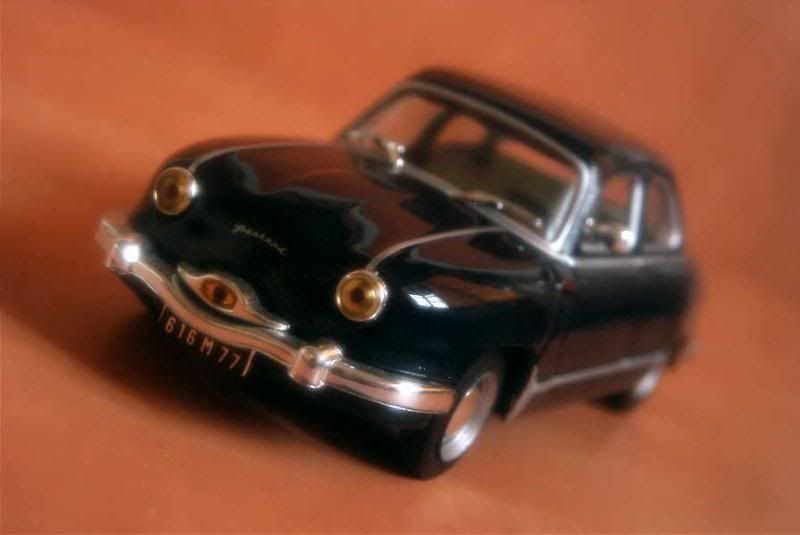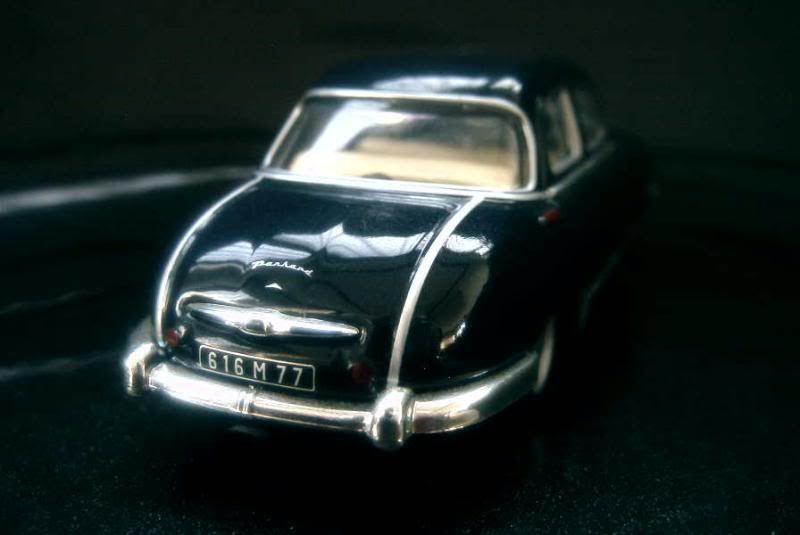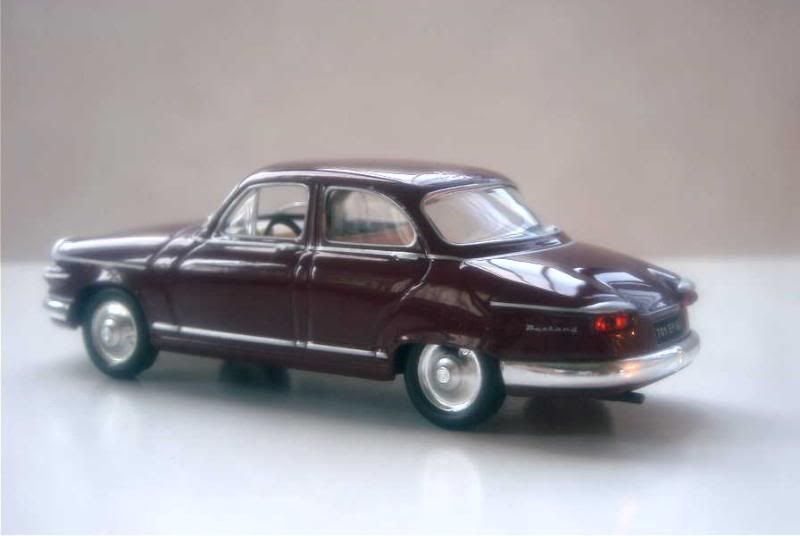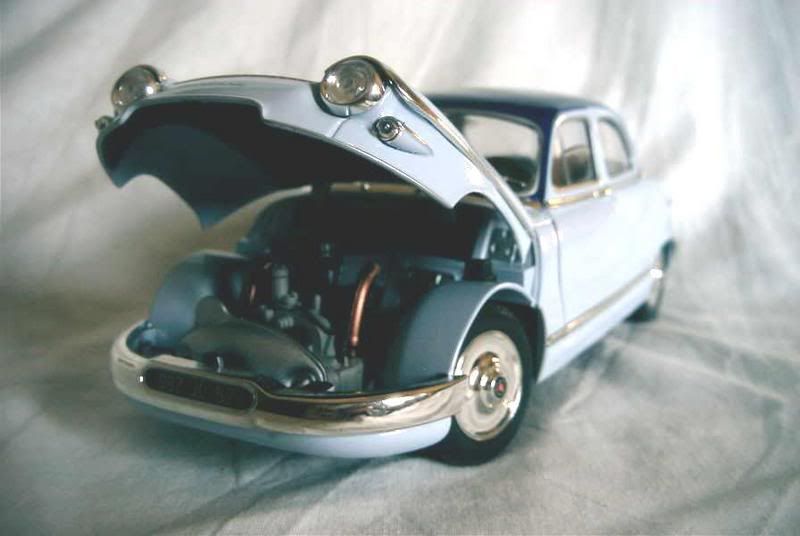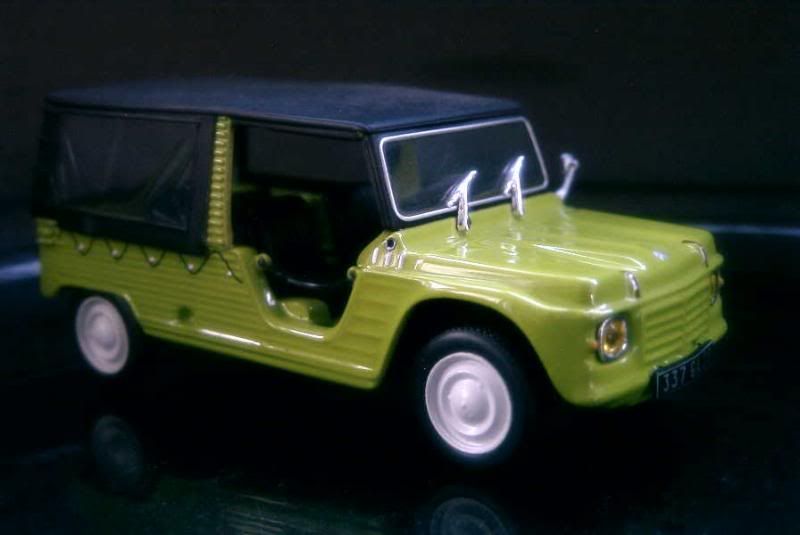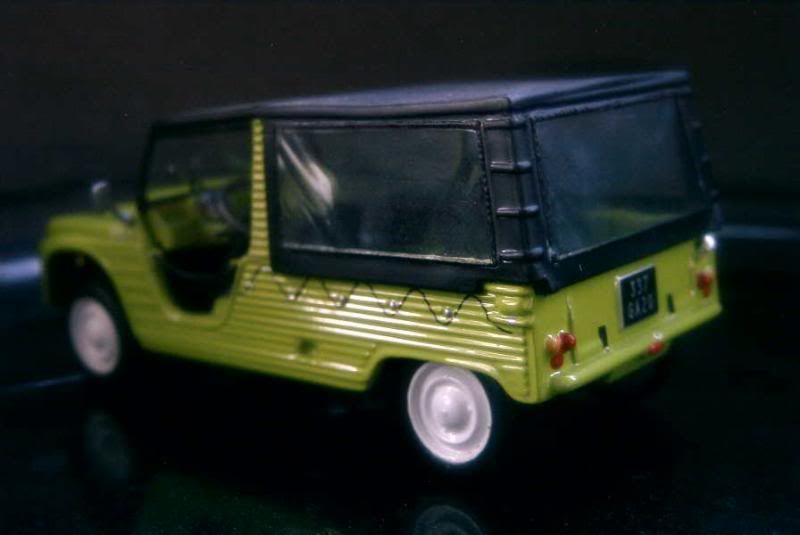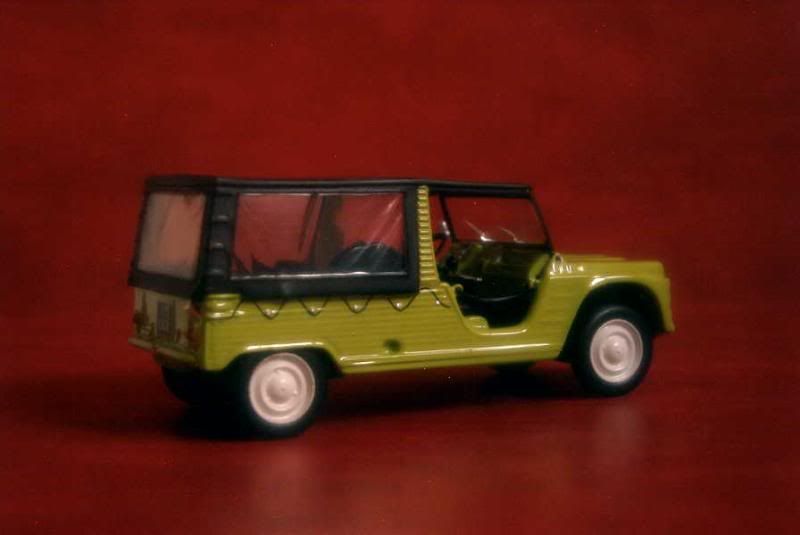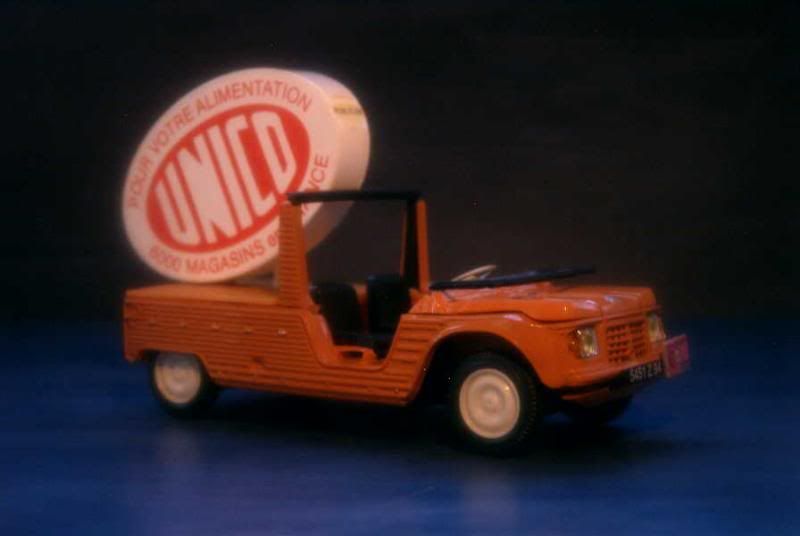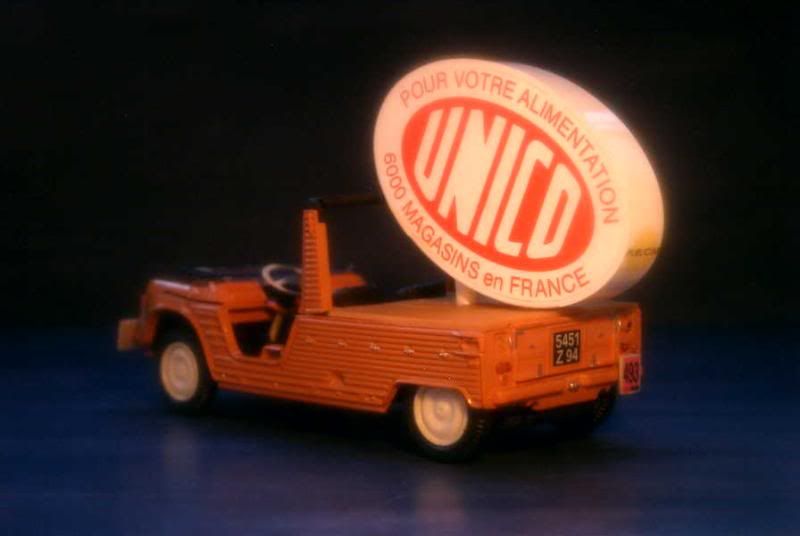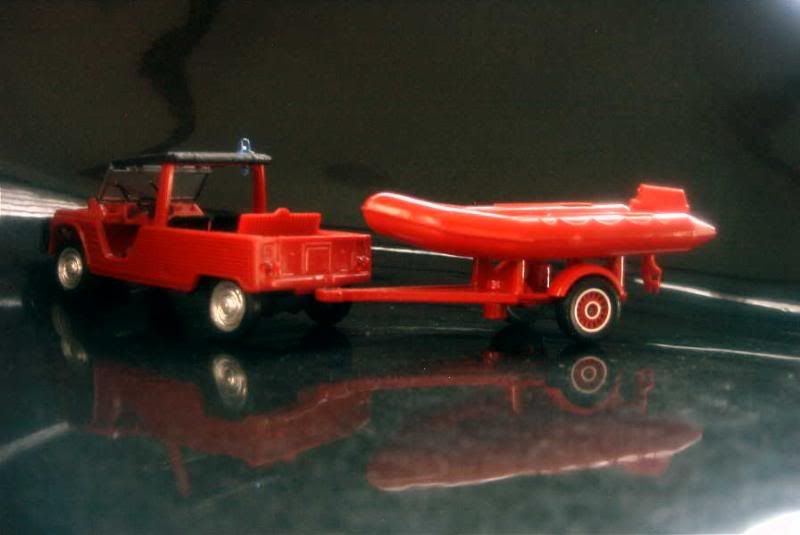A little history
Introduced at the 1977 Geneva motor show, the 928 model was the second step of a plan to transmute Porsche from the traditional maker of rear-engine GTs to a producer of a range of more luxurious front-engine cars. It followed the 924 by two years and, at term, was to replace the 911, then perceived as reaching the limits of its potential. In the end, it would be the venerable model to survive all of its younger siblings.
When the 911 had replaced the 356 almost a decade and a half earlier, Porsche had had concerns about the whopping price of the newcomer, so much actually that it felt obliged to offer a cheaper alternative, the four-cylinder 912. The 928 again showed a steep increase in price over the 911, but this time, no other choice would be given to Porsche’s customers, apart from the traditional 911 itself. Right after the introduction of the front-engined, Audi-powered 924, the most faithful among Porsche’s fans were more than ever reluctant to accept a front-engine car as the company’s flagship. The choice of a water-cooled V8 didn’t help, either, nor did the hefty weight. The modern design was indeed elegant, but the choice of such odd pop-up headlights was debated by some. Overall, the large and luxurious car, which enjoyed a much forgiving handling than the tricky 911, seemed to aim at the North American market more than any other. The 928 started to sell rather poorly, at least by comparison with its maker’s expectations; this would never improve over time.
Soon enough it had to be admitted that the 928 would never be able to replace the 911. As a luxury coupe crowning Porsche’s range, it was a worthy automobile though, and enjoyed a long career. More and more equipment and constantly enlarged engines brought ever-increasing prices. If the sales of the original 4.5-litre, 240 hp cars were limited, those of the last 928 GTS, with their huge 5.4-litre, 350 hp V8 were almost anecdotic. The car was retired in 1995, and Porsche would not renew the experience of proposing a front-engine V8 car until the Cayenne, introduced seven years later.
About the model
Model: Porsche 928 S4
Year: 1986
Maker: High Speed
Scale: 1/43
Distributed by: High Speed
Acquired: brand new, in May 2005, in Manila, Philippines
Crude when it comes to details, but well-proportioned interpretation of the slightly face-lifted 1987 model year 928: 10/20.

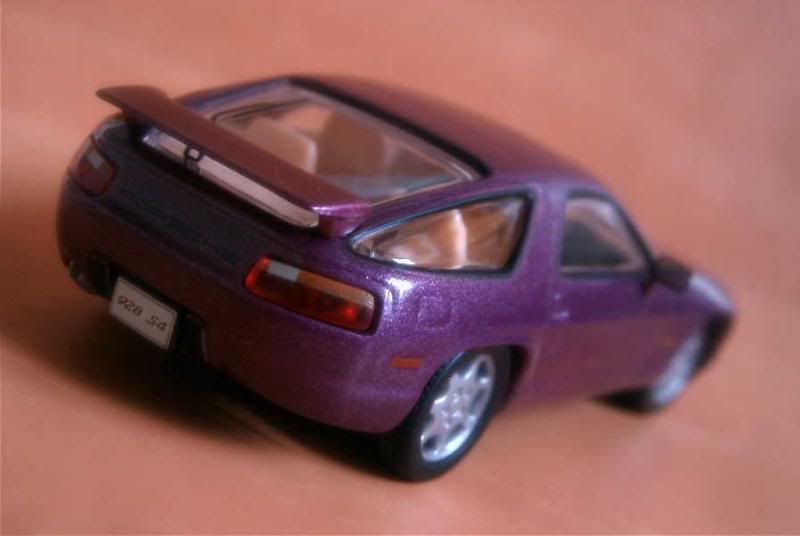
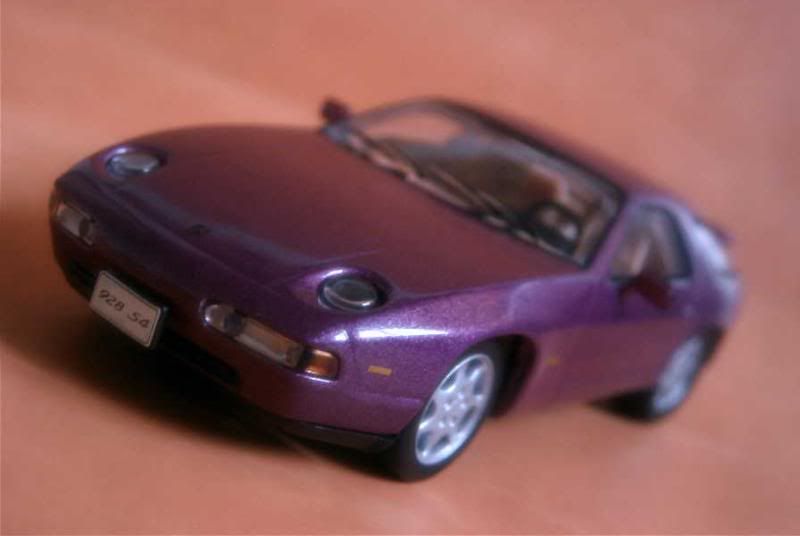
Introduced at the 1977 Geneva motor show, the 928 model was the second step of a plan to transmute Porsche from the traditional maker of rear-engine GTs to a producer of a range of more luxurious front-engine cars. It followed the 924 by two years and, at term, was to replace the 911, then perceived as reaching the limits of its potential. In the end, it would be the venerable model to survive all of its younger siblings.
When the 911 had replaced the 356 almost a decade and a half earlier, Porsche had had concerns about the whopping price of the newcomer, so much actually that it felt obliged to offer a cheaper alternative, the four-cylinder 912. The 928 again showed a steep increase in price over the 911, but this time, no other choice would be given to Porsche’s customers, apart from the traditional 911 itself. Right after the introduction of the front-engined, Audi-powered 924, the most faithful among Porsche’s fans were more than ever reluctant to accept a front-engine car as the company’s flagship. The choice of a water-cooled V8 didn’t help, either, nor did the hefty weight. The modern design was indeed elegant, but the choice of such odd pop-up headlights was debated by some. Overall, the large and luxurious car, which enjoyed a much forgiving handling than the tricky 911, seemed to aim at the North American market more than any other. The 928 started to sell rather poorly, at least by comparison with its maker’s expectations; this would never improve over time.
Soon enough it had to be admitted that the 928 would never be able to replace the 911. As a luxury coupe crowning Porsche’s range, it was a worthy automobile though, and enjoyed a long career. More and more equipment and constantly enlarged engines brought ever-increasing prices. If the sales of the original 4.5-litre, 240 hp cars were limited, those of the last 928 GTS, with their huge 5.4-litre, 350 hp V8 were almost anecdotic. The car was retired in 1995, and Porsche would not renew the experience of proposing a front-engine V8 car until the Cayenne, introduced seven years later.
About the model
Model: Porsche 928 S4
Year: 1986
Maker: High Speed
Scale: 1/43
Distributed by: High Speed
Acquired: brand new, in May 2005, in Manila, Philippines
Crude when it comes to details, but well-proportioned interpretation of the slightly face-lifted 1987 model year 928: 10/20.



